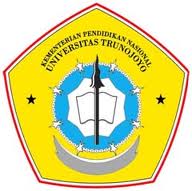Anda belum Log-in!
Silahkan Log in
Selamat Datang di Portal Digital Content Publisher
Sabtu , 08 November 2025
Perpustakaan sebagai jantung pendidikan tinggi di Indonesia, harus mampu memberi kontribusi yang berarti bagi pelaksanaan proses belajar mengajar di perguruan tinggi.
di-posting oleh pada 2022-08-24 07:08:30 • 383 klik
RANCANG BANGUN KURSI RODA MENGGUNAKAN VOICE RECOGNITION DENGAN METODE PID BAGI PENDERITA TUNA DAKSA
DESIGN AND BUILD A WHEELCHAIR USING VOICE RECOGNITION WITH PID FOR . METHOD DIFFERENT PATIENTS
disusun oleh FERI DANAFIA SYAHPUTRA
| Subyek: | Voice Recognition Kursi Roda PID Motor BLDC Baterai. |
| Kata Kunci: | Voice Recognition Kursi Roda PID Motor BLDC Baterai. |
[ Anotasi Abstrak ]
Kursi roda merupakan alat bantu medis yang diciptakan untuk membantu pasien yang mengalami penyakit kelumpuhan pada kaki dalam berjalan. Kursi roda pada awal diciptakan menggunakan bantuan dorongan tangan atau bantuan orang lain untuk dapat berjalan. Salah satu kendala pada penggunaan kursi roda adalah kurangnya kemandirian pada pengguna, artinya masih membutuhkan orang lain untuk mengoprasikannya. Melihat masalah tersebut, pada penelitian ini dirancang dan dibuat sebuah kursi roda dengan menggunakan perintah suara (VoicernRecognition) untuk pengoprasiannya. Penelitian ini juga menggunakan metode PID (Proportional Integral Derrivartive) yang mengontrol arah dan kecepatan pergerakan motor BLDC. Terdapat 5 komponen pengujian pada penelitian ini yakni pengujian daya tahan baterai, pengujian motor BLDC, pengujian perintah suara, pengujian kecepatan kursi roda, dan pengujian PID. Pengujian disini melibatkan 5 variabel penelitian dengan beban berat 60 Kg, 65 Kg, 70 Kg, 75 Kg,rndan 80 Kg. Hasil Pengujian pada sistem menunjukkan bahwa sistem yang dirancang mampu bekerja dan sesuai dengan tujuan penelitian. Kecepatan rata -rata kursi roda diperoleh 1,125 m/detik. Perintah suara pada penelitian ini berjalan dengan baik dengan waktu delay rata – rata 2,8 detik. Berat badan pengguna mempengaruhi percepatan, kecepatan dan waktu tempuh kursi roda. Implementasi PID terbaik diperoleh dengan mendapatkan feedback kp 1, ki 1, kd 0,1. Daya tahan baterai pada kursi roda adalah 2,6 jam dengan jarak tempuh maksimal 8,48 Km.
Deskripsi Lain
A wheelchair is a medical aid that was created to help patients who experience paralysis of the legs in walking. The wheelchair was originally created using the help of a hand push the help of another person to be able to walk. One of the obstacles to the use of wheelchairs is the lack of independence of the users, meaning that they still need other people to operate them. Seeing these problems, in thisrnstudy a wheelchair was designed and made using voice commands (Voice Recognition) for its operation. This study also uses the PID (Proportional Integral Derrivartive) method which controls the direction and speed of the BLDC motor movement. There are 5 testing components in this study, namely battery life testing, BLDC motor testing, voice command testing, wheelchair speed testing, and PIDrntesting. The test here involves 5 research variables with a heavy load of 60 Kg, 65 Kg, 70 Kg, 75 Kg, and 80 Kg. Test results on the system indicate that the system designed is able to work and in accordance with the research objectives. The average speed of the wheelchair was 1.125 m/s. Voice commands in this study run well with an average delay time of 2.8 seconds. The user's weight affects the acceleration, speed and travel time of the wheelchair. The best PID implementation is obtained by getting kp 1, ki 1, kd 0.1 feedback. The battery life in the wheelchair is 2.6 hours with a maximum distance of 8.48 Km.
| Kontributor | : MiftachulUlum, S.T., M.T Koko Joni, S.T., M,Eng |
| Tanggal tercipta | : 2022-07-26 |
| Jenis(Tipe) | : Text |
| Bentuk(Format) | |
| Bahasa | : Indonesia |
| Pengenal(Identifier) | : TRUNOJOYO-Tugas Akhir-25599 |
| No Koleksi | : 170431100010 |
Ketentuan (Rights) :
2022
 Download File Penyerta (khusus anggota terdaftar)
Download File Penyerta (khusus anggota terdaftar) 1. TRUNOJOYO-Tugas Akhir-25599-Abstract.pdf - 862 KB
1. TRUNOJOYO-Tugas Akhir-25599-Abstract.pdf - 862 KB 2. TRUNOJOYO-Tugas Akhir-25599-COVER.pdf - 2177 KB
2. TRUNOJOYO-Tugas Akhir-25599-COVER.pdf - 2177 KB 3. TRUNOJOYO-Tugas Akhir-25599-CHAPTER 1.pdf - 3664 KB
3. TRUNOJOYO-Tugas Akhir-25599-CHAPTER 1.pdf - 3664 KB 4. TRUNOJOYO-Tugas Akhir-25599-CHAPTER 2.pdf - 6990 KB
4. TRUNOJOYO-Tugas Akhir-25599-CHAPTER 2.pdf - 6990 KB 5. TRUNOJOYO-Tugas Akhir-25599-CHAPTER 3.pdf - 1837 KB
5. TRUNOJOYO-Tugas Akhir-25599-CHAPTER 3.pdf - 1837 KB 6. TRUNOJOYO-Tugas Akhir-25599-CHAPTER 4.pdf - 3202 KB
6. TRUNOJOYO-Tugas Akhir-25599-CHAPTER 4.pdf - 3202 KB 7. TRUNOJOYO-Tugas Akhir-25599-CHAPTER 5.pdf - 263 KB
7. TRUNOJOYO-Tugas Akhir-25599-CHAPTER 5.pdf - 263 KB 8. TRUNOJOYO-Tugas Akhir-25599-CONCLUSION.pdf - 263 KB
8. TRUNOJOYO-Tugas Akhir-25599-CONCLUSION.pdf - 263 KB 9. TRUNOJOYO-Tugas Akhir-25599-REFERENCES.pdf - 539 KB
9. TRUNOJOYO-Tugas Akhir-25599-REFERENCES.pdf - 539 KB 10. TRUNOJOYO-Tugas Akhir-25599-APPENDICES.pdf - 1603 KB
10. TRUNOJOYO-Tugas Akhir-25599-APPENDICES.pdf - 1603 KB Dokumen sejenis...
Dokumen sejenis...Tidak ada !
 Dokumen yang bertautan...
Dokumen yang bertautan... Kembali ke Daftar
Kembali ke Daftar 